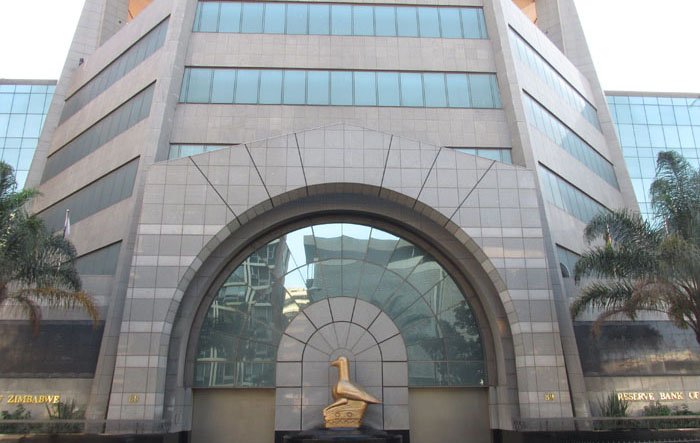Manufacturing sector contraction a response to monetary policy
The first quarter of 2024 has brought forth a mixed bag of economic indicators from Zimbabwe’s manufacturing sector, as revealed by the Zimbabwe National Statistical Agency.
The Purchasing Managers’ Index (PMI) and the Manufacturing Confidence Index (MCI) serve as vital barometers of the economic climate.
They provide insights into the sector’s health and offer crucial signals for policymakers and stakeholders.
The PMI for the first quarter of 2024 stands at 33,3, a stark decrease from the fourth quarter of 2023, which was 40,3. This seven-point drop underscores a deepening contraction in the manufacturing sector.
The PMI, which ranges from 0 to 100, indicates sector expansion above 50 and contraction below 50.
The further the PMI is from 50, the more significant the change. A PMI of 33,3 thus signals a considerable contraction, highlighting a challenging environment for manufacturers.
Contrastingly, the MCI has shown a glimmer of optimism, increasing from -1,3 in the fourth quarter of 2023 to 2,7 in the first quarter of 2024.
The MCI, which measures the level of optimism or pessimism among manufacturers, provides a nuanced view of business sentiments. A positive MCI suggests a budding optimism, albeit fragile, while a negative MCI reflects prevailing pessimism.
Ideally, a PMI above 50 is desirable, indicating sectoral expansion, increased production and positive economic momentum. For MCI, a consistently positive value is preferred, as it reflects a general optimism that can drive investment, employment, and economic growth.
The current PMI of 33,3, however, underscores a worrying trend of contraction, while the slightly positive MCI hints at a cautious optimism among manufacturers.
Zimbabwe’s liquidity problems have been a persistent thorn in the side of the economy. Limited access to capital has stifled manufacturing activities, leading to reduced production capabilities and workforce layoffs.
Banks, facing their own liquidity constraints, have been unable to extend the necessary credit to businesses. This vicious cycle hampers the ability of manufacturers to procure raw materials, maintain machinery, and sustain operations, thereby contributing to the PMI’s decline.
The tight monetary stance pursued by the Reserve Bank of Zimbabwe (RBZ) has had far-reaching implications on disposable incomes and consumer demand.
Efforts to curb inflation and stabilise the currency have led to high-interest rates and restrictive lending practices. Consequently, consumers face reduced purchasing power, leading to lower demand for manufactured goods. This decrease in demand not only affects sales but also dampens production incentives, further pulling down the PMI.
Electricity supply issues have compounded the challenges faced by Zimbabwe’s manufacturing sector.
Frequent power outages and load shedding have disrupted production schedules, increased operational costs, and reduced overall output.
Manufacturers are forced to rely on costly alternative power sources, eroding profit margins and limiting growth potential. The inconsistent power supply is a critical factor in the declining PMI, as it directly affects manufacturing efficiency and productivity.
Addressing these multifaceted issues requires concerted efforts from both policymakers and industry stakeholders.
The Government and the RBZ need to implement measures to enhance liquidity in the banking sector.
This can be achieved through policies that encourage savings, attract foreign investment, and foster financial inclusivity.
Increased liquidity will enable banks to extend credit to manufacturers, stimulating production and economic activity.
To counter the effects of low disposable incomes, the Government should consider fiscal policies that boost consumer spending. This could include targeted subsidies, tax relief for lower-income households, and social welfare programmes that enhance purchasing power.
Investing in the energy sector is crucial. Expanding power generation capacity, upgrading infrastructure, and exploring renewable energy sources can provide a stable power supply, essential for uninterrupted manufacturing activities.
Small and medium enterprises (SMEs) form the backbone of Zimbabwe’s economy. Providing targeted support to SMEs through grants, affordable financing options, and capacity building initiatives can foster innovation, enhance productivity, and create employment opportunities.
Consistent and transparent economic policies are vital for building business confidence. Policymakers should engage with industry stakeholders to develop policies that support sustainable growth and address sector-specific challenges.
Conclusively, the PMI and MCI for the first quarter of 2024 paint a complex picture of Zimbabwe’s manufacturing sector. While the significant contraction indicated by the PMI is alarming, the slight optimism reflected in the MCI offers a silver lining.
Addressing liquidity problems, stimulating demand, ensuring a stable power supply, and fostering a supportive business environment are critical steps towards reversing the current trend.
With a coordinated and strategic approach, Zimbabwe can navigate these challenges and set the stage for a resilient and vibrant manufacturing sector.
Tapiwanashe Mangwiro is a resident economist with the Business Weekly and writes this in his own capacity. @willoe_tee on twitter and Tapiwanashe Willoe Mangwiro on LinkedIn-ebusinessweekly










